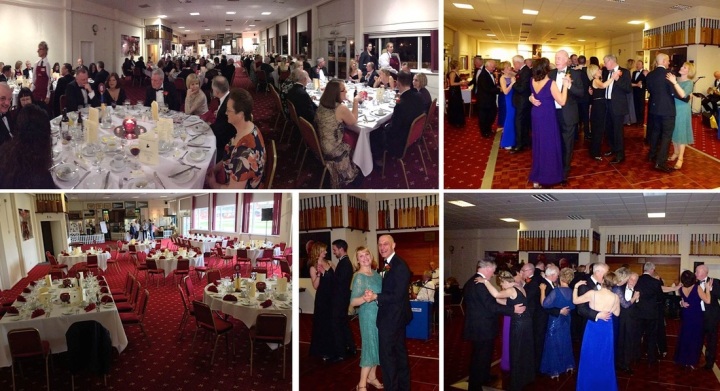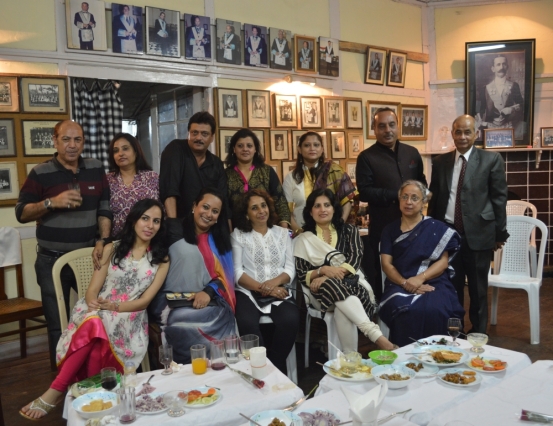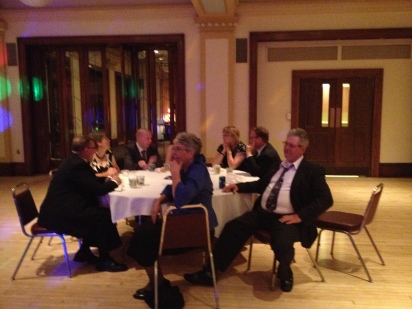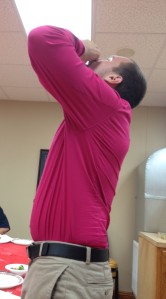I’ve gotten a few emails recently inquiring about Ladies’ Nights. Since in many jurisdictions installations will be in the next few months, this is a popular time of year to be having the event. Please know that I am in the States, and so can only attest to what I know. If it is different where you live, feel free to speak up!
What is Ladies’ Night?
A Ladies’ Night is a celebration put on by a Lodge or Lodges. The idea is that it is an evening to honor the Ladies’ in the Mason’s life, not just their SO, but also their mother, daughter, sister, etc; anyone who supports him. Some of the more liberal Lodges have changed the name to “Partner Night” or “Significant Other Night” in order to be more inclusive.
Where did it come from?
The short answer is, no one really knows. That being said, there are records of festivals being put on in the 1700’s where both women and non-Masonic men were invited. They were not called Ladies’ Nights at this point, but the speeches that were given did indicate that at least one purpose of the festival was to thank the ladies for their support. They became what we know now around the 1940’s.

What goes on there?
Exactly what the Ladies’ Night includes, depends on the Lodge. When T hosted his, it was a semi-casual dinner at the Lodge, with drinks, and also celebrated some patriotic elements. Some Lodges may bundle Ladies’ Night with celebrating Past Masters, living or deceased.
They may include toasts, speeches, drinks, dinner, dancing, and more. There is actually some (unofficial) ritual written for the evening. If you aren’t sure what exactly your Ladies’ Night will entail, do not be afraid to contact the Lodge’s secretary or Worshipful Master for more information. They will be happy to provide you with the details (sans any planned surprises for the ladies).
Ladies’ Nights tend to be a bigger to do outside of the States, especially the UK. Often these events can involve gloves, full gowns, tuxedos, champagne, you get the idea. These can often be grand affairs, and may include gifts for the ladies, black or white tie attire, toasts to the Queen, presentations, and poems and songs presented or sung by the Masons to the women.
In some jurisdictions, a similar ritual is conducted, called Ladies at the Table
What’s on the agenda?
To give you a general idea as to what may go on at a Ladies’ Night, this is an agenda taken from the Ladies Festival website. Please note that this is a very traditional agenda, and is more UK based.
- Drinks reception
- Photographs to be taken (if applicable)
- Presentation of all guests to Worshipful Master and Lady
- Marshal escorts Worshipful Master and his Lady to their table.
- Chaplin to say Grace
- Commence dinner, taking wine between courses
- Coffee served, all stand to sing Masonic Grace (UK)
- Remain standing to sing National Anthem sung (first verse)
- Start the formal toasts:Marshal announces ‘ the Loyal Toast. The Queen’
- President gives permission to smoke (if applicable)
- Toasts, speeches & presentations
- Marshal draws tickets for table prizes and Festival Committee sell raffle tickets
- Claim attention to Worshipful Master, who will call up Festival Committee and Lady(s), to thank them and make a presentation
- Marshal announces that the Worshipful Master and Lady are to retire
- Let dancing begin –Worshipful Master and his Lady lead the dancing
- Band break – draw raffle
- Close the evening – form a circle for ‘Auld Lang Syne’
- Final words from the Worshipful Master
What should I wear?
If you aren’t sure, ask! In some Lodges it is black tie four course meal, in others, it may be a t shirt and jeans family picnic. Usually either way you can get away with a modest cocktail or sun dress.

What else should I know?
If you are the current Worshipful Master’s Lady, you may be asked to give a speech. Don’t fret! A Google search will give you a number of Ladies’ Night speech ideas. There are even a few poems dedicated to the evening. If you need help organizing your Ladies’ Night, I would recommend
Some Lodges are moving toward having Ladies’ outings, instead of the more traditional “ceremony”. Events I have seen include concerts, paint and sips, and spa days.
If you need help organizing your Ladies’ Night, or simply want to learn more, I would recommend this site.



































